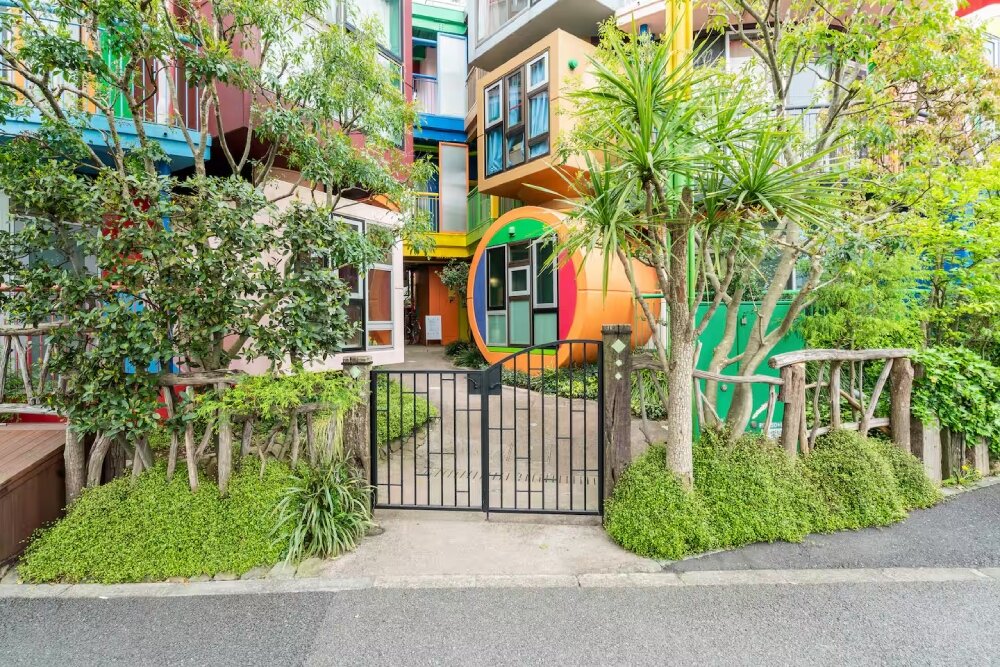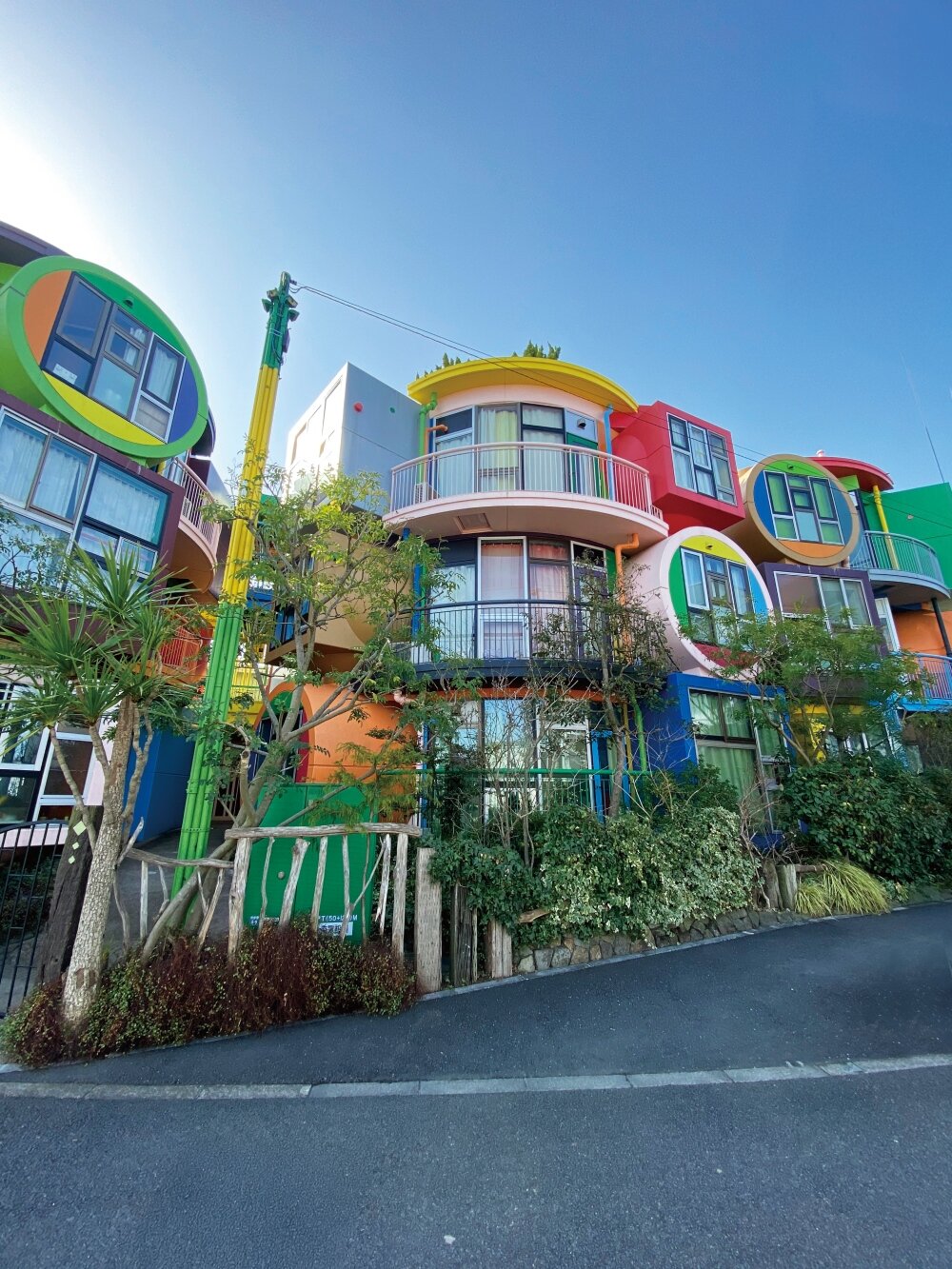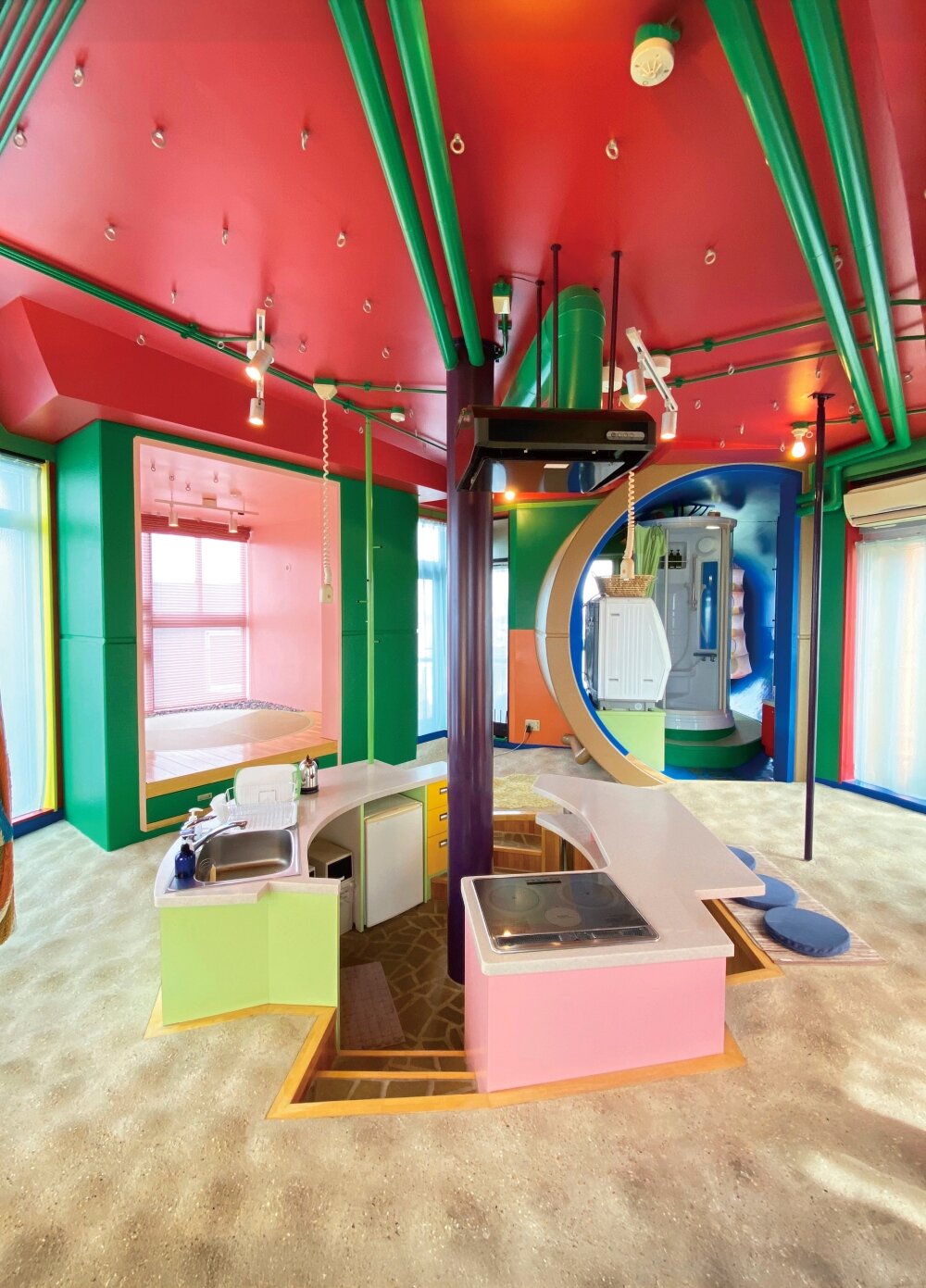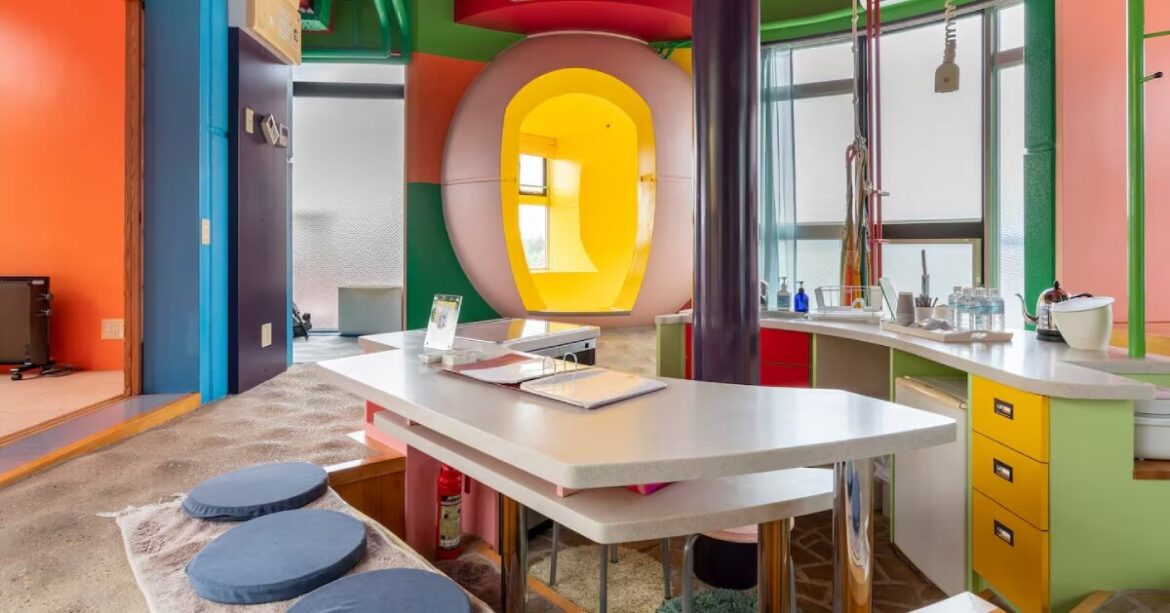reversible destiny lofts mitaka celebrate 20 years
20 years after its completion, the Reversible Destiny Lofts Mitaka, dedicated in theory and spirit to the memory of Helen Keller, remains one of the most enigmatic experiments in residential architecture. With a focus on activating both body and mind, the nine-unit complex in suburban Tokyo was conceived by artists and architects Shusaku Arakawa and Madeline Gins as a house ‘to not to die’ — one which continuously engages and stimulates the occupant.
It comprises three geometric archetypes, including the cube, the sphere, and the tube, each stacked and interlocked into irregular compositions. Affectionately referred to as an ‘ultrachromatic undying house’ by novelist Setouchi Jakuchou, the bright structures are painted inside-out in 14 different colors and formed by spatial irregularities. These elements together mirror the duo’s belief in responsive environments that encourage physical and mental adaptation of their occupants from childhood through to old age.
The lofts were their most ambitious built attempt to translate this philosophy into form. Since opening in 2005, they have continued to serve as residences, educational venues, and cultural spaces, and visitors are now also welcome to book a unit via Airbnb for short stays. Alongside this, the occasion of the 20th anniversary brings with it a new series of public programs and events including a retrospective exhibition.

image via Airbnb
Shusaku Arakawa & Madeline Gins foster space-body connections
Extending the playful, almost irreverent character of the facades, the interiors are no less confrontational. From the uneven elevations in the flooring that invite intuitive navigation and the varying ceiling heights, to the sudden drops, vertical poles, and color-saturated surfaces, each detail is intended to interrupt habitual patterns of movement and perception, keeping the body alert and the mind attentive. Shusaku Arakawa and Madeline Gins once expressed that destiny is not fixed, but something that can be constructed through spatial experience. In that spirit, the Reversible Destiny Lofts Mitaka deviate from architectural neutrality or standardization to invite active, ongoing participation between users and their surroundings in unexpected expressions.
While the lofts’ formal exuberance often draws comparisons to playgrounds or postmodern fantasies, their impact lies in their theoretical intent. The project — realized with the intention to create a house in which ‘not to die’ — is grounded in a bold conviction that architecture can act as a tool to challenge mortality itself. Arakawa and Gins developed what they called ‘procedural architecture,’ a philosophy that positioned the built environment as an active catalyst for cognitive and physical transformation. This experimental typology thus aims to stimulate the senses by offering the possibility to discover the full potential of the body and experience challenging environments.

image courtesy of ARAKAWA+GINS
The relationship between body, mind, and space becomes integral to this idea which, with the experience of climbing, crouching, and rebalancing, reveals the true intent of the architecture. This connection further considers the individual needs of all ages, lifestyles, and physical abilities. Some configurations might seem better suited to a child while others are more suited to an adult. In doing so, the architecture draws attention to and takes into account the differences between individuals. This confrontation with one’s own physical limits is also central to the Reversible Destiny Lofts’ philosophy. As the body changes with age or condition, the architecture remains equally dynamic.
For Arakawa and Gins, this potential for transformation was embodied most powerfully in the life of Helen Keller, to whom the project is dedicated. They regarded Keller as a symbol of overcoming adversity and celebrated her active practice of the principles that the duo manifests across the lofts.

image by Masataka Nakano

image courtesy of ARAKAWA+GINS


AloJapan.com